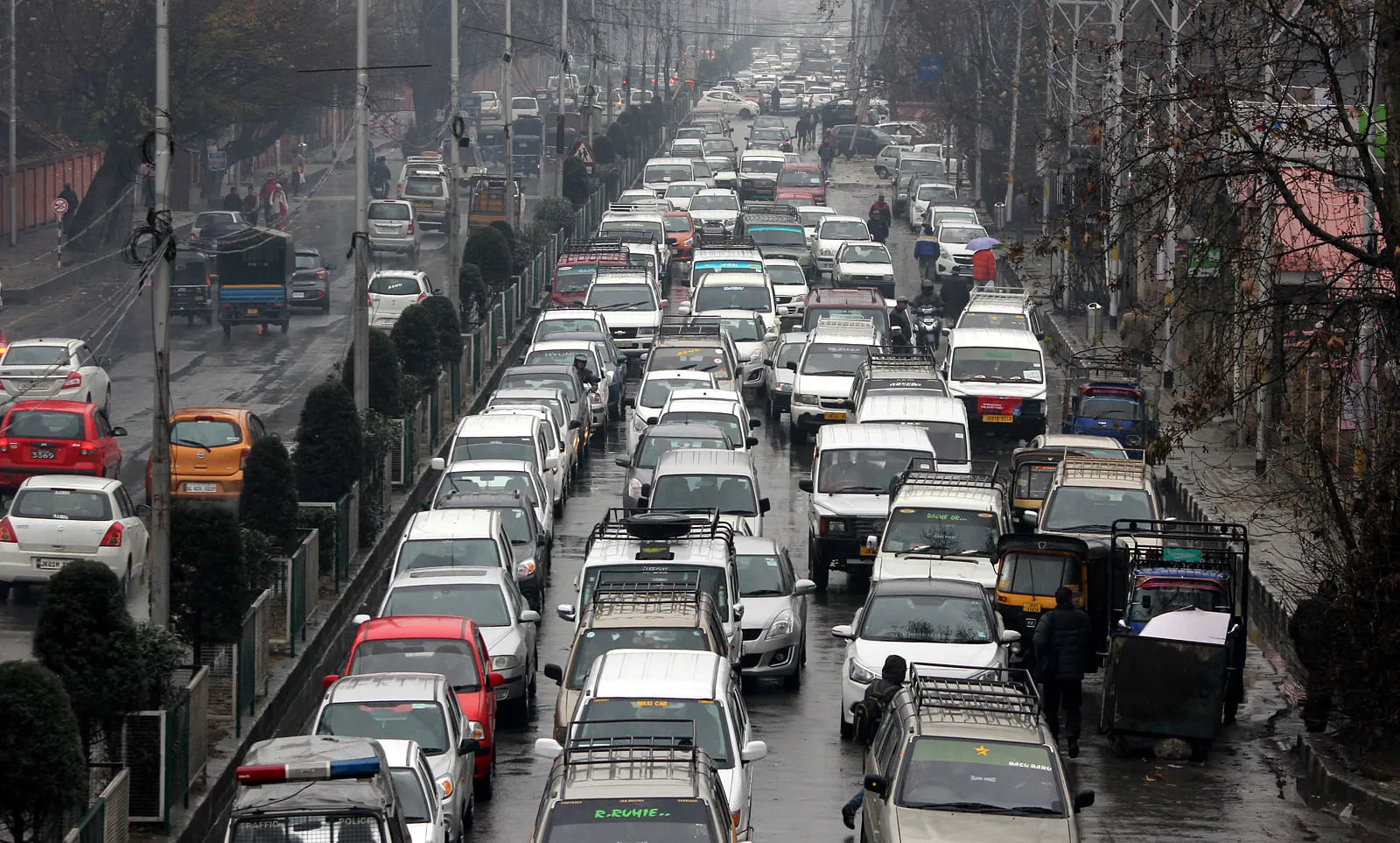An official government report says frequent and sever traffic congestion in Srinagar has reached a tipping point with commuters having to spend millions of man hours stuck on the roads each year.
“Traffic congestion is already severe on many city roads andthe gridlock plaguing Srinagar has reached a tipping point, with the regionspending millions of man hours in traffic congestion each year,” the report ontraffic situation of the capital city highlights.
It blames a mismatch between growth of road infrastructureand vehicular population for the traffic mess in the summer capital of Jammuand Kashmir.
The report brings out that with an annual population growthrate of 2 percent the state has registered a phenomenal increase of correspondingvehicular traffic of 7 percent during the last decade.
“Due to this rapid growth of vehicles vis-à-vis marginalincrease in road infrastructure, the problems related to transportation havegrown manifold,” it says.
“Vehicular pollution is assuming critical dimensions andparking problems are aggravating. These problems among others will grow in sizeand scale unless action is taken now.”
Two comprehensive traffic and transportation plans have beenprepared for Srinagar city which include the Srinagar urban transport project1992 and comprehensive mobility plan (CMP) of 2012, but not a single step hasbeen taken so far, the report rues.
The report also highlights that Srinagar has geographicaldisadvantages with physical thresholds like mountains, wetlands, and waterbodies, major constraints in the development of an organised road network.
“The city road network is cramped because of missing links,incomplete rings, inefficient radials, bottlenecks, etc. Some of the radialslike Rangreth Road, Airport Road are virtually dead ends as they are notconnected to any major arterials. Also the location of strategic installationsacross city has been another key impediment in the development.”
According to traffic police department, around 80,000vehicles enter Srinagar city on daily basis.
The report states that Srinagar has historically developedwith a radial road network spanning in north, south and west directions. Allthe radials are witnessing extreme traffic flows much beyond their capacities,hence poor level of service.
The report recommends that the city road network needs acomplete relook for developing an efficient and sustainable transport networkto meet future demand.
It highlights the need to identify potential publictransport corridors supported by a High Capacity Transport System (HCTS).
Accordingly, the report identifies a mass transport networkto meet the future travel demand of the city.






